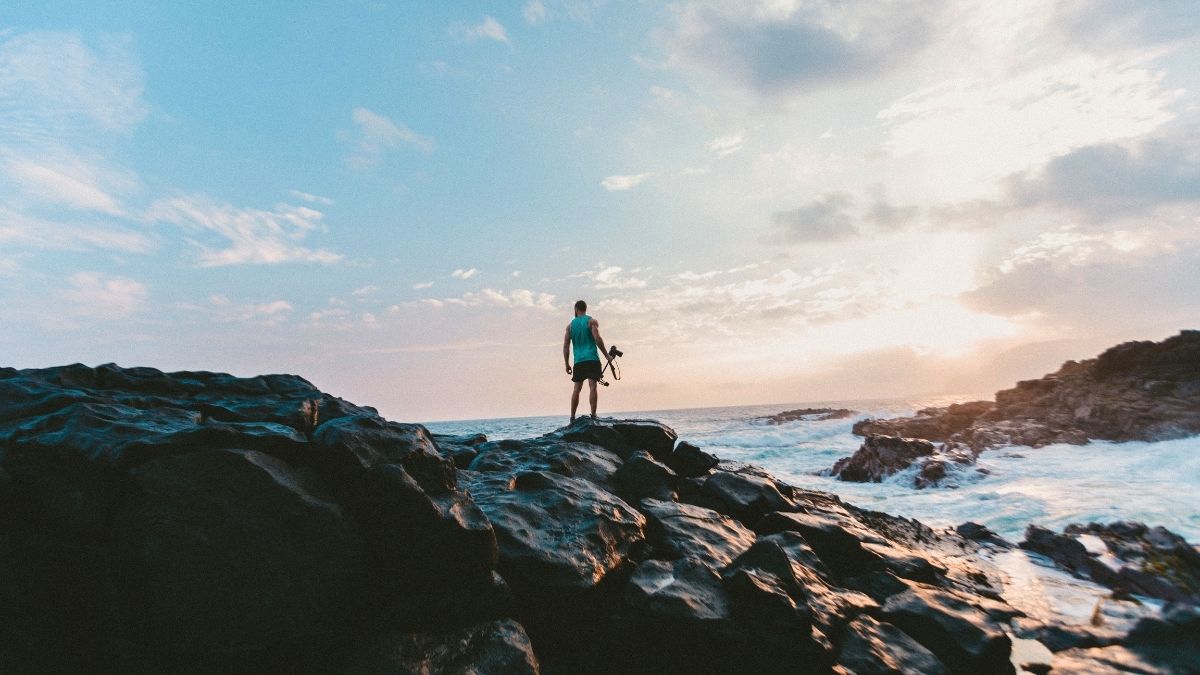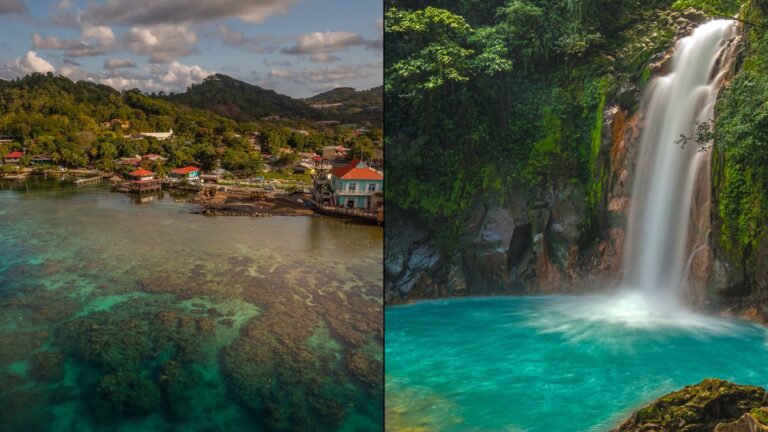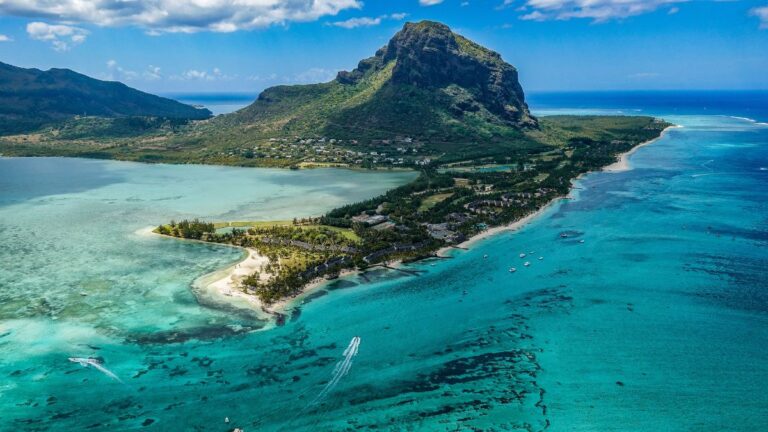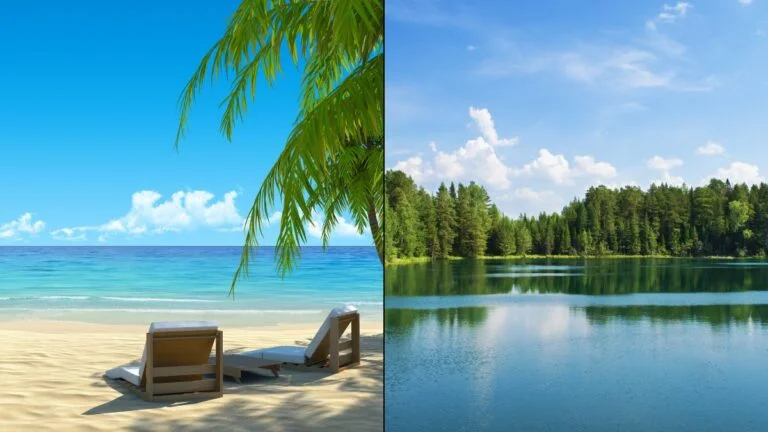How to Start a Travel Vlog? 10 Tips for Beginners

As participants in Amazon Associates and other programs, we earn from qualifying purchases. This comes at no additional cost to you. For more details, see our Affiliate Disclosure.
Stepping into the exciting world of travel vlogging can seem a bit daunting initially. With the boundless beauty of the world out there and countless stories waiting to be shared, it’s not always clear where or how to start. If you’ve ever dreamt of taking your wanderlust and creativity to the next level by launching your own travel vlog, but found yourself tangled up in the ‘how’s, this guide is your golden ticket.
With a step-by-step approach, we are here to share 10 indispensable tips for beginners that will transform you from an eager enthusiast into a confident travel vlogger, ready to capture the world through your unique lens.
1. Find Your Target Audience
Understanding your target audience is an essential first step in crafting a successful travel vlog. This means identifying who your viewers will be, what interests them, and how they engage with content. Are they adventure seekers on the lookout for extreme sports experiences? Or perhaps they’re cultural enthusiasts who love to immerse themselves in the local lifestyle of different places.
To properly find and understand your target audience, you should:
- Conduct surveys: Use online platforms to run surveys asking people about their travel preferences, what kind of travel content they enjoy, and what they would like to see more of.
- Analyze demographics: Pay attention to the age, location, gender, and other characteristics of your potential audience. Each demographic group has unique interests, so cater your content accordingly.
- Engage on social media: Actively interact with your followers or potential viewers on social media platforms. Ask questions, respond to comments, and encourage discussions.
Understanding the audience’s content consumption habits is another critical factor. It’s not just about what they like, but also how they prefer to consume it.
Consider the following:
- Content length: Do they prefer short, snappy videos or long, in-depth explorations?
- Posting time and frequency: Are your viewers most active in the mornings, evenings, or weekends? How often do they expect new content?
- Platform preference: Are they primarily YouTube users, or do they also engage on Instagram, Facebook, or TikTok?
A well-defined target audience serves as a compass, guiding the type of content you create, how you promote it, and even how you interact with your viewers. It ensures a meaningful connection with your audience, keeping them engaged and eager for your next travel adventure.
2. Create a Brand
In the world of travel vlogging, where countless creators vie for viewer attention, having a unique and strong brand is essential. Your brand is more than just a logo or tagline; it’s the essence of who you are, what you stand for, and what makes you different. It includes everything from your vlog’s visual aesthetic to your communication style and the type of content you create.
Defining your brand essence is your starting point.
- What’s your niche? Are you a budget traveler, luxury traveler, or a food-focused globetrotter? Your niche should reflect your personal interests and expertise, and it should be something your target audience is interested in.
- What’s your unique perspective? How do you see the world differently, and how can you express that through your vlog? Your unique perspective can become your unique selling proposition (USP).
- What are your values? What are the core beliefs and values that guide your content? This could be a commitment to sustainable travel, supporting local businesses, or authenticity in your experiences.
Next, you’ll need to develop your brand’s visual identity.
- Logo and Color Palette: Design a logo and choose a color palette that represents your brand’s personality. Be consistent in using them across all your platforms and content.
- Typography: Choose fonts that align with your brand’s character and use them consistently across all your content.
- Imagery: Whether it’s your video thumbnails or Instagram photos, make sure your imagery has a consistent style that’s easily recognizable as yours.
The final piece of the puzzle is your brand’s voice.
- Tone of communication: Is your brand voice friendly and informal, or more professional and polished?
- Language: Does your brand use simple, easily understandable language, or is it more sophisticated and jargon-filled?
Remember, a strong brand helps set you apart from other travel vloggers and creates a sense of familiarity and trust with your viewers. It’s not something you build overnight, but with consistent effort, your brand can become a powerful asset in your travel vlogging journey.
3. Choose the Right Equipment
A key factor in creating engaging and high-quality travel vlogs is your equipment. From your camera to your microphone, each piece plays a crucial role in capturing your adventures. However, getting started doesn’t necessarily mean investing in the most expensive equipment. The right equipment for you balances quality, cost, and your specific needs. Here are some of the essentials:
Cameras: Your camera is the backbone of your vlogging setup. It’s where you should prioritize spending, but remember, the best camera for you depends on your specific needs.
- DSLRs and Mirrorless Cameras: These are excellent for high-quality videos with good depth of field. They have interchangeable lenses for versatility, but they can be heavy to carry around.
- Action Cameras: For adventurous and sports-focused travel vlogs, action cameras like GoPros are perfect. They’re compact, durable, and often waterproof.
- Smartphones: Don’t underestimate the power of a good smartphone camera. Many modern smartphones can shoot in 4K and are a compact and convenient choice, especially for beginners.
Audio Equipment: Good quality sound is often an overlooked, but vitally important aspect of travel vlogging.
- Lapel/Lavalier Microphones: These are small microphones that can clip onto your clothing. They’re excellent for capturing speech clearly, especially in noisy environments.
- Shotgun Microphones: These attach to your camera and are good for general use. They capture sound from the direction they’re pointed in, which helps reduce background noise.
Stabilization Equipment: Nobody likes shaky footage. A good tripod or gimbal can make a world of difference.
- Tripods: Essential for steady shots and when you need to be in the frame. Look for something light and compact for travel.
- Gimbals: These are used for smoothing out footage while moving. They’re especially useful for action shots or walking tours.
Accessories: There are a few other pieces of equipment that can help improve your vlog’s quality.
- Lighting: Natural light is best, but having a portable LED light can be helpful for darker environments.
- Extra Batteries/Power Banks: You don’t want to run out of battery in the middle of a shoot, so always carry spares.
- Hard Drive: Video files take up a lot of space. An external hard drive allows you to backup your footage safely.
Equipment is important, but it’s not everything. It’s the creativity, storytelling, and personality you bring to your vlogs that truly captivate your audience. Start with what you can afford, learn to use it well, and upgrade as you go along.
4. Plan Your Content
Embarking on a travel vlog journey involves more than just hitting record on your camera. It’s vital to plan your content strategically to create engaging, consistent, and high-quality vlogs. A well-planned content strategy can increase viewer retention, encourage audience growth, and even open doors to potential monetization.
Understanding your niche and audience: Before you start planning individual videos, understand the type of content your audience enjoys and expects within your chosen niche. Research other successful vlogs in your space to see what works well.
Content Calendar: A content calendar is a great tool to organize your vlog posts. It helps ensure consistency, a key factor in growing and maintaining your audience.
- Frequency of posts: Determine how often you can realistically post new content. Whether it’s once a week or once a month, consistency is key.
- Posting schedule: Identify the best times to post new content based on your audience’s habits. Certain days of the week or times of day may result in higher viewer engagement.
Creating a Content Mix: Variety is the spice of life and of a great travel vlog. Try to offer a mix of content types to keep your audience engaged and coming back for more. This could include:
- Destination Guides: In-depth guides to specific destinations you visit.
- Travel Tips: Share your travel tips and hacks, such as packing guides, budgeting advice, or safety tips.
- Personal Stories/Experiences: Sharing personal stories makes your content unique and helps you connect on a deeper level with your audience.
Planning Individual Videos: Once you have an idea of the type of content you’re going to create, start planning individual videos.
- Storyboarding: Sketch out the main shots and structure of your video. This helps you visualize your video before you start shooting.
- Scripting: Even if you prefer a more natural and unscripted style, having a rough script or outline can ensure you cover all your key points.
- Location Scouting: If possible, visit your shooting locations beforehand. Identify the best spots for filming and any potential issues such as lighting conditions or noise levels.
While planning is important, it’s also necessary to be flexible. Travel is full of unexpected moments and surprises. Be prepared to adapt your plans and capture these spontaneous experiences, as they often make for the most compelling content.
5. Focus on Your Passion
In the bustling world of travel vlogging, authenticity reigns supreme. Viewers are drawn to content creators who are passionate about what they do. Your genuine enthusiasm is what sets you apart from the crowd and keeps your audience coming back for more. Here are some ways to focus on your passion:
Choose a niche that excites you: Travel vlogging encompasses a broad spectrum of styles and topics. From luxury travel to backpacking, food tours to adventure sports, cultural experiences to wildlife encounters – there’s a niche for every passion. Choose a niche that genuinely fascifies you, because your excitement will translate into compelling content.
Be yourself: Authenticity is key. Don’t try to emulate other vloggers’ styles or personas – your unique personality is your greatest asset. Let your genuine self shine through in your videos. When viewers connect with you on a personal level, they’re more likely to engage with your content and become loyal followers.
Share what you love: Whether it’s your fascination for local cuisine, your thrill for extreme sports, or your love for off-the-beaten-track places, share what you love with your audience. Your passion is infectious, and viewers will appreciate your sincerity.
Stay passionate: It’s essential to maintain your passion for travel and vlogging in the long term. It can be easy to get caught up in chasing views or likes, but remember why you started travel vlogging in the first place. Keep that passion alive, even when faced with challenges or setbacks.
The most successful travel vlogs are those where the vlogger’s passion is evident. Your love for travel, your enthusiasm for sharing your experiences, and your dedication to creating engaging content are what will truly resonate with your viewers. So, focus on your passion and let it be the driving force behind your travel vlog.
6. Include Yourself
Creating a successful travel vlog goes beyond just showcasing beautiful locations; it’s about sharing personal experiences. Including yourself in your vlogs adds a personal touch that can engage viewers more effectively than a montage of beautiful sceneries alone. It transforms your vlog from a generic travel guide into a personal journey that viewers can emotionally connect with.
Be the face of your vlog: When people click on your vlog, they’re not just interested in the destination – they’re interested in your experience of the destination. Put yourself in front of the camera, share your thoughts, reactions, and feelings. This makes your vlog unique and can help establish a loyal viewer base.
Narrate your journey: Don’t just show, tell. Narrate your journey, share the stories behind the footage, talk about what you’re seeing, doing, or tasting. This not only makes the vlog more informative but also more engaging and personal.
Engage with your viewers: Talk to your viewers as if they were there with you. Ask questions, request feedback, or just casually chat with your audience as you would with a friend. This can encourage viewer interaction and help build a community around your vlog.
Share personal moments: While it’s important to maintain some personal boundaries, sharing some personal moments or thoughts can help viewers feel more connected to you. This doesn’t mean you have to share everything, but occasionally letting viewers peek into your life beyond the travel aspect can add depth to your vlog.
You are the key differentiator between your travel vlog and anyone else’s. Including yourself in your vlogs adds a layer of personality and authenticity that can help you stand out in the crowded travel vlogging space. Be genuine, be personable, and most importantly, be yourself.
7. Interact with Locals
Travel is about more than just seeing new places; it’s about immersing yourself in the local culture. Interacting with locals can bring a depth and authenticity to your travel vlogs that can’t be achieved by simply visiting tourist hotspots. It allows your viewers to experience the destination through a local lens, making your vlogs more engaging and unique.
Local insights: Locals are a treasure trove of knowledge about their area. They can provide unique insights, recommend hidden gems, and share interesting stories or traditions that you won’t find in a guidebook.
Human connection: Interacting with locals adds a human element to your vlogs. It shows the real people behind the places you visit and can result in heartwarming or enlightening exchanges that captivate your viewers.
Authentic experiences: Engaging with locals can lead to more authentic experiences. From trying home-cooked meals to participating in local traditions or events, these experiences can make your vlogs stand out and be more memorable.
To interact with locals effectively, consider the following:
- Respect local customs and norms: It’s essential to be respectful of local customs, traditions, and norms when interacting with locals. This can vary greatly from place to place, so it’s crucial to do your research ahead of time.
- Learn some local language: Even a few basic phrases in the local language can go a long way in connecting with locals. It shows respect and willingness to engage with their culture.
- Ask for permission: Always ask for permission before filming locals, especially in sensitive contexts or private spaces. Some people may not want to be filmed, and their wishes should always be respected.
Interactions with locals should be respectful and meaningful. Not only does it make your vlogs more engaging, but it also enriches your own travel experience. After all, travel is as much about the people you meet as it is about the places you see.
8. Keep it Short
In the fast-paced digital world, attention spans are shorter than ever. Keeping your travel vlogs concise and engaging is crucial for viewer retention and satisfaction. While there’s no one-size-fits-all length for a travel vlog, as a beginner, aiming for videos between 5-10 minutes could be a good starting point. As you grow and understand your audience better, you can adjust this length according to their preferences and viewing habits. Here’s how you can effectively keep your videos short and sweet:
Plan Your Content: As discussed earlier, planning your content helps you stay focused and ensures you only include the most essential and engaging parts of your journey. Avoid unnecessary detours or overly lengthy explanations.
Edit Ruthlessly: Editing is where the magic happens. It’s your opportunity to trim down your footage and keep only the best parts. Be ruthless in your editing. If a scene doesn’t add value or enhance the story, consider cutting it.
Keep a Fast Pace: Keeping a fast pace in your vlogs helps maintain viewer interest. This doesn’t mean rushing through your content; instead, it’s about smooth transitions, dynamic editing, and maintaining a good rhythm throughout your vlog.
Prioritize Quality Over Quantity: It’s better to have a short, high-quality vlog that engages your viewers from start to finish than a long, drawn-out video that loses viewer interest. Prioritize creating rich, engaging content over filling up minutes.
Use Time-Lapses or Montages: If you have a lot to show but not much time, consider using time-lapses or montages. They can show a lot in a short time and can be visually captivating.
The goal is to keep your viewers engaged and wanting more. Longer isn’t always better, and in the world of vlogging, sometimes less is more. Keep it short, engaging, and fun, and your viewers are likely to stick around for the entire video and come back for more.
9. Edit Your Video
Video editing is a critical step in the vlogging process. It’s where your footage transforms into a compelling narrative that can captivate your audience. Although it can be time-consuming, learning to edit your videos effectively is a valuable skill that can greatly enhance the quality of your vlogs. Here are some aspects to focus on:
Choosing the right software: There are plenty of video editing software options out there, from beginner-friendly applications to professional-grade suites. Free tools like iMovie (Mac) or Shotcut (Windows) are great for beginners, while Adobe Premiere Pro and Final Cut Pro X offer more advanced features.
Basic editing techniques: Learn the basics first – how to trim clips, add transitions, adjust audio levels, and add text or titles. These are the building blocks of your video.
Storytelling through editing: Your goal should be to tell a story through your editing. Arrange your clips in a way that makes sense and adds a narrative flow to your vlog. Remember, it’s not just about showcasing beautiful footage, but about narrating a compelling journey.
Adding music and sound effects: Background music and sound effects can enhance the mood and overall feel of your vlog. Be sure to use royalty-free music or sound effects, or music for which you have the necessary rights.
Color grading: This involves adjusting the colors in your video to enhance its visual appeal. This could mean making your video warmer or cooler, enhancing certain colors, or even creating a unique look and feel that defines your brand.
Review and refine: Don’t be afraid to review your video several times, refining it as you go along. You might spot areas where transitions could be smoother, the music could be better synced, or where cuts could be tighter.
While video editing can be challenging, it’s also an opportunity to express your creativity. With practice, you’ll find your unique editing style that sets your vlogs apart. Don’t be discouraged if your first few videos aren’t perfect – editing, like any skill, improves over time.
10. Promote Your Videos
Creating compelling content is only half the battle in the world of travel vlogging. The other half is getting your videos in front of viewers. No matter how great your vlogs are, they won’t make an impact if they’re not seen. That’s where promotion comes in. Here are some effective ways to promote your travel vlogs:
Leverage Social Media: Social media is a powerful tool for promoting your videos. Share snippets, trailers, or images from your vlog on platforms such as Instagram, Facebook, and Twitter. Don’t forget to add relevant hashtags to increase discoverability.
Optimize for SEO: SEO, or Search Engine Optimization, is crucial for increasing your videos’ visibility on platforms like YouTube. Use relevant keywords in your video titles, descriptions, and tags. Also, consider adding closed captions or transcripts to help improve your video’s SEO.
Collaborate with other vloggers: Collaboration is a fantastic way to expand your reach. Consider teaming up with other travel vloggers for collaborations or guest appearances. This can help you reach new audiences and gain more visibility.
Engage with your viewers: Engaging with your viewers can turn them into loyal fans who are more likely to share and promote your videos. Respond to comments, answer questions, and consider incorporating viewer feedback or suggestions into your vlogs.
Promote in relevant communities: Participate in online travel communities, forums, or groups, and share your vlogs where appropriate. Remember, this is not about spamming your videos everywhere but about contributing valuable content to relevant discussions.
Paid Advertising: If you have a budget for it, consider using paid advertising to promote your vlogs. Platforms like YouTube, Facebook, and Instagram offer targeted advertising options to help your videos reach a wider audience.
Promoting your videos can be just as creative and engaging as creating them. It’s an ongoing process, and it might take some time to see significant results. But with consistency, quality content, and effective promotion, your travel vlogs can reach and inspire a growing audience.
How Hard Is It To Become A Travel Vlogger?
Becoming a travel vlogger can be challenging but also incredibly rewarding. It requires a combination of many skills, including content creation, filming, editing, social media management, marketing, and more. Here are some factors to consider when assessing the difficulty of becoming a travel vlogger:
Skills and Knowledge: Successful vlogging requires more than just a passion for travel. You need to learn how to create engaging content, film high-quality videos, edit your footage, optimize your content for search engines, and promote your videos effectively. These skills take time and practice to develop.
Investment: Travel vlogging often requires an upfront investment in the right equipment. While you can start with a smartphone, you may eventually need to invest in a good camera, microphone, drone, editing software, and perhaps even lighting equipment.
Consistency: Building a successful travel vlog doesn’t happen overnight. It requires consistent content creation and a steady output of high-quality videos. This consistency can be challenging to maintain, especially when travel isn’t always predictable.
Travel Costs: Traveling itself can be costly, and unless you already travel regularly or have another source of income, covering travel costs can be challenging, at least until you’re able to monetize your vlog.
Income Uncertainty: It may take a while before you start making money from your travel vlog. Even then, income from vlogging can be unpredictable and varies based on factors such as ad revenue, sponsorships, and viewer donations.
Competition: The travel vlogging space is highly competitive, with many people sharing their travel experiences online. Standing out from the crowd can be difficult and requires a unique angle, style, or niche.
Despite these challenges, becoming a travel vlogger can be a fulfilling career for those who are passionate about travel and content creation. If you’re willing to invest the time, effort, and resources, and if you’re persistent and creative, you can turn the challenges into opportunities and successfully navigate the exciting world of travel vlogging.
How Much Money Can You Make Travel Vlogging?
The amount of money you can make from travel vlogging varies greatly and depends on multiple factors, including the size and engagement level of your audience, the number of views your videos receive, the ways in which you monetize your vlog, and more. Here are some potential sources of income for travel vloggers:
- Ad Revenue: Once you meet the requirements to join YouTube’s Partner Program (this requires 1,000 subscribers and 4,000 watch hours in the past 12 months), you can start earning money from ads displayed on your videos. The amount you earn depends on various factors, including the number of views your videos get and the type of ads displayed.
- Sponsorships and Brand Partnerships: As your channel grows, brands may approach you for sponsorships or partnerships. This could involve promoting a product or service in your videos, creating content for the brand’s channels, or becoming a brand ambassador. The money you can make from these deals varies widely depending on the brand and the terms of the partnership.
- Affiliate Marketing: This involves promoting products or services in your videos and providing a link or a code that your viewers can use to purchase. You earn a commission for every sale made through your link or code.
- Crowdfunding and Donations: Some vloggers use platforms like Patreon to receive money from their viewers in exchange for exclusive content or other perks. You can also receive one-time donations through platforms like PayPal or Ko-fi.
- Merchandise Sales: If you have a strong brand and a loyal fanbase, you might consider selling merchandise such as t-shirts, hats, or travel accessories.
- Paid Content: This could be exclusive videos, e-books, courses, or webinars that your viewers pay to access.
The average annual income for travel bloggers in the United States is $87,923, with the 25th percentile at $35,500 and the 75th percentile at $118,500. The highest earning travel bloggers can make over a million dollars a year, but this takes years of hard work and dedication.
Here’s a table with some estimated earnings of popular travel vloggers on YouTube:
| Vlogger | Views for the Last 30 days | Estimated daily earnings | Estimated monthly earnings | Estimated yearly projection |
|---|---|---|---|---|
| FunForLouis | 4,600,440 (+7.01%) | $292.60 — $308.00 | $8,778.00 — $9,240.00 | $105,336.00 — $110,880.00 |
| JacksGap | 2,939,019 (-23.65%) | $186.20 — $196.00 | $5,586.00 — $5,880.00 | $67,032.00 — $70,560.00 |
| Mr. Ben Brown | 2,257,551 (+20.15%) | $143.45 — $151.00 | $4,303.50 — $4,530.00 | $51,642.00 — $54,360.00 |
| migrationology | 1,423,158 (+1.94%) | $90.25 — $95.00 | $2,707.50 — $2,850.00 | $32,490.00 — $34,200.00 |
| Hey Nadine | 184,775 (+18.90%) | $11.40 — $12.00 | $342.00 — $360.00 | $4,104.00 — $4,320.00 |
It’s challenging to provide a specific range for how much you can earn as a travel vlogger because it depends on so many factors. Some successful vloggers make six figures or even more, while others might make just enough to cover their travel expenses.
Remember that building a travel vlog that generates a significant income takes time and effort. It’s important to focus on creating high-quality, engaging content and growing your audience before you start thinking about monetization. With patience and hard work, travel vlogging can potentially become a profitable venture.
Who Pays Travel Vloggers?
Travel vloggers can receive income from various sources depending on their monetization strategies. Here are the main entities that typically pay travel vloggers:
- Advertising Networks: Once a travel vlogger meets the requirements to join platforms like YouTube’s Partner Program, they can start earning money from ads displayed on their videos. These ads are managed by advertising networks like Google AdSense. The vlogger is paid based on metrics like Cost Per Mille (CPM), which is the amount an advertiser pays for a thousand views of their ad.
- Sponsors and Brands: Many travel vloggers partner with companies relevant to their content or audience. The company pays the vlogger to promote their products or services within the vlog, typically aiming to reach the vlogger’s audience.
- Affiliate Programs: Companies pay commissions to vloggers who refer customers to their products or services. Vloggers include affiliate links in their video descriptions, and when viewers use these links to make a purchase, the vlogger earns a commission.
- Viewer Donations: Some vloggers use crowdfunding platforms like Patreon, where viewers can donate money to support the vlogger’s work. In exchange, viewers might receive benefits like exclusive content or early access to videos.
- Paid Subscriptions and Memberships: Some vloggers offer paid subscriptions or memberships, where viewers pay a regular fee for access to exclusive content or perks. This can be managed through platforms like YouTube’s membership feature or Patreon.
- Merchandise Sales: Travel vloggers who have a strong brand may sell merchandise such as t-shirts, hats, or travel accessories. The income from these sales can be a significant source of revenue.
- Content Licensing: If a vlogger’s footage is particularly unique or appealing, it may be purchased by other companies for use in their own media.
Building a travel vlog that generates income from these sources typically requires a significant investment of time and effort to create engaging content and grow an audience. While the potential for income is there, it often comes after the hard work of establishing and building the vlog.
Is Travel Vlogging Worth It
Whether travel vlogging is worth it or not is highly subjective and depends on what you’re looking to get out of it. Here are a few factors to consider:
Passion for Travel and Storytelling: If you genuinely love traveling and sharing your experiences with others, travel vlogging can be incredibly rewarding. The joy of capturing your travels, the thrill of storytelling, and the satisfaction of sharing your experiences can make it a fulfilling endeavor.
Building a Community: Travel vlogging allows you to connect with like-minded individuals around the world. Building a community of viewers who are interested in your travels can be a rewarding experience, providing you with a sense of connection and a platform to exchange ideas and experiences.
Creativity and Skill Development: Vlogging encourages creativity and requires the development of various skills, such as videography, editing, storytelling, social media management, and more. If you enjoy learning and growing in these areas, travel vlogging can be worth it.
Monetary Gain: If you’re able to build a successful travel vlog with a large and engaged audience, there can be potential for significant income from advertising revenue, sponsorships, affiliate marketing, and more. However, it’s important to remember that this typically requires a considerable amount of time, effort, and even initial investment.
Flexibility: Travel vlogging offers a flexible lifestyle. You’re not tied to a 9-5 job and can often work from anywhere in the world. However, it’s important to note that vlogging also requires discipline and can involve irregular hours and a lot of behind-the-scenes work.
However, travel vlogging also comes with challenges. It can be time-consuming, require up-front investment, and potentially take a long time to start earning significant income. There’s also the aspect of constantly being ‘on’ for your audience, which some people may find exhausting.
In the end, whether travel vlogging is worth it or not comes down to your personal goals, interests, and work ethic. If you’re passionate about travel, enjoy creating content, and are prepared to put in the necessary work, travel vlogging can be a fulfilling and potentially lucrative venture.






